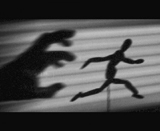Death
The Fear of Death and the Four Methods of Conquering It
Generally speaking, perhaps the greatest obstacle in the way of man’s progress is fear, a fear that is many-sided, multiform, self-contradictory, illogical, unreasoning and often unreasonable. Of all fears the most subtle and the most tenacious is the fear of death. It is deeply rooted in the subconscient and it is not easy to dislodge. It is obviously made up of several interwoven elements: the spirit of conservatism and the concern for self-preservation so as to ensure the continuity of consciousness, the recoil before the unknown, the uneasiness caused by the unexpected and the unforeseeable, and perhaps, behind all that, hidden in the depths of the cells, the instinct that death is not inevitable and that, if certain conditions are fulfilled, it can be conquered; although, as a matter of fact, fear in itself is one of the greatest obstacles to that conquest. For one cannot conquer what one fears, and one who fears death has already been conquered by it.
How can one overcome this fear? Several methods can be used for this purpose. But first of all, a few fundamental notions are needed to help us in our endeavour. The first and most important point is to know that life is one and immortal. Only the forms are countless, fleeting and brittle. This knowledge must be securely and permanently established in the mind and one must identify one’s consciousness as far as possible with the eternal life that is independent of every form, but which manifests in all forms. This gives the indispensable psychological basis with which to confront the problem, for the problem remains. Even if the inner being is enlightened enough to be above all fear, the fear still remains hidden in the cells of the body, obscure, spontaneous, beyond the reach of reason, usually almost unconscious. It is in these obscure depths that one must find it out, seize hold of it and cast upon it the light of knowledge and certitude.
Thus life does not die, but the form is dissolved, and it is this dissolution that the physical consciousness dreads. And yet the form is constantly changing and in essence there is nothing to prevent this change from being progressive. Only this progressive change could make death no longer inevitable, but it is very difficult to achieve and demands conditions that very few people are able to fulfil. Thus the method to be followed in order to overcome the fear of death will differ according to the nature of the case and the state of the consciousness. These methods can be classified into four principal kinds, although each one includes a large number of varieties; in fact, each individual must develop his own system.
The first method appeals to the reason. One can say that in the present state of the world, death is inevitable; a body that has taken birth will necessarily die one day or another, and in almost every case death comes when it must: one can neither hasten nor delay its hour. Someone who craves for it may have to wait very long to obtain it and someone who dreads it may suddenly be struck down in spite of all the precautions he has taken. The hour of death seems therefore to be inexorably fixed, except for a very few individuals who possess powers that the human race in general does not command. Reason teaches us that it is absurd to fear something that one cannot avoid. The only thing to do is to accept the idea of death and quietly do the best one can from day to day, from hour to hour, without worrying about what is going to happen. This process is very effective when it is used by intellectuals who are accustomed to act according to the laws of reason; but it would be less successful for emotional people who live in their feelings and let themselves be ruled by them. No doubt, these people should have recourse to the second method, the method of inner seeking. Beyond all the emotions, in the silent and tranquil depths of our being, there is a light shining constantly, the light of the psychic consciousness. Go in search of this light, concentrate on it; it is within you. With a persevering will you are sure to find it and as soon as you enter into it, you awake to the sense of immortality. You have always lived, you will always live; you become wholly independent of your body; your conscious existence does not depend on it; and this body is only one of the transient forms through which you have manifested. Death is no longer an extinction, it is only a transition. All fear instantly vanishes and you walk through life with the calm certitude of a free man.
The third method is for those who have faith in a God, their God, and who have given themselves to him. They belong to him integrally; all the events of their lives are an expression of the divine will and they accept them not merely with calm submission but with gratitude, for they are convinced that whatever happens to them is always for their own good. They have a mystic trust in their God and in their personal relationship with him. They have made an absolute surrender of their will to his and feel his unvarying love and protection, wholly independent of the accidents of life and death. They have the constant experience of lying at the feet of their Beloved in an absolute self-surrender or of being cradled in his arms and enjoying a perfect security. There is no longer any room in their consciousness for fear, anxiety or torment; all that has been replaced by a calm and delightful bliss.
But not everyone has the good fortune of being a mystic.
Finally there are those who are born warriors. They cannot accept life as it is and they feel pulsating within them their right to immortality, an integral and earthly immortality. They possess a kind of intuitive knowledge that death is nothing but a bad habit; they seem to be born with the resolution to conquer it. But this conquest entails a desperate combat against an army of fierce and subtle assailants, a combat that has to be fought constantly, almost at every minute. Only one who has an indomitable spirit should attempt it. The battle has many fronts; it is waged on several planes that intermingle and complement each other.
The first battle to be fought is already formidable: it is the mental battle against a collective suggestion that is massive, overwhelming, compelling, a suggestion based on thousands of years of experience, on a law of Nature that does not yet seem to have had any exception. It translates itself into this stubborn assertion: it has always been so, it cannot be any different; death is inevitable and it is madness to hope that it can be anything else. The concert is unanimous and till now even the most advanced scientist has hardly dared to sound a discordant note, a hope for the future. As for the religions, most of them have based their power of action on the fact of death and they assert that God wanted man to die since he created him mortal. Many of them make death a deliverance, a liberation, sometimes even a reward. Their injunction is: submit to the will of the Highest, accept without revolt the idea of death and you shall have peace and happiness. In spite of all this, the mind must remain unshakable in its conviction and sustain an unbending will. But for one who has resolved to conquer death, all these suggestions have no effect and cannot affect his certitude which is based on a profound revelation.
The second battle is the battle of the feelings, the fight against attachment to everything one has created, everything one has loved. By assiduous labour, sometimes at the cost of great efforts, you have built up a home, a career, a social, literary, artistic, scientific or political work, you have formed an environment with yourself at the centre and you depend on it at least as much as it depends on you. You are surrounded by a group of people, relatives, friends, helpers, and when you think of your life, they occupy almost as great a place as yourself in your thought, so much so that if they were to be suddenly taken away from you, you would feel lost, as if a very important part of your being had disappeared.
It is not a matter of giving up all these things, since they make up, at least to a great extent, the aim and purpose of your existence. But you must give up all attachment to these things, so that you may feel capable of living without them, or rather so that you may be ready, if they leave you, to rebuild a new life for yourself, in new circumstances, and to do this indefinitely, for such is the consequence of immortality. This state may be defined in this way: to be able to organise and carry out everything with utmost care and attention and yet remain free from all desire and attachment, for if you wish to escape death, you must not be bound by anything that will perish.
After the feelings come the sensations. Here the fight is pitiless and the adversaries formidable. They can sense the slightest weakness and strike where you are defenceless. The victories you win are only fleeting and the same battles are repeated indefinitely. The enemy whom you thought you had defeated rises up again and again to strike you. You must have a strongly tempered character, an untiring endurance to be able to withstand every defeat, every rebuff, every denial, every discouragement and the immense weariness of finding yourself always in contradiction with daily experience and earthly events.
We come now to the most terrible battle of all, the physical battle which is fought in the body; for it goes on without respite or truce. It begins at birth and can end only with the defeat of one of the two combatants: the force of transformation and the force of disintegration. I say at birth, for in fact the two movements are in conflict from the very moment one comes into the world, although the conflict becomes conscious and deliberate only much later. For every indisposition, every illness, every malformation, even accidents, are the result of the action of the force of disintegration, just as growth, harmonious development, resistance to attack, recovery from illness, every return to the normal functioning, every progressive improvement, are due to the action of the force of transformation. Later on, with the development of the consciousness, when the fight becomes deliberate, it changes into a frantic race between the two opposite and rival movements, a race to see which one will reach its goal first, transformation or death. This means a ceaseless effort, a constant concentration to call down the regenerating force and to increase the receptivity of the cells to this force, to fight step by step, from point to point against the devastating action of the forces of destruction and decline, to tear out of its grasp everything that is capable of responding to the ascending urge, to enlighten, purify and stabilise. It is an obscure and obstinate struggle, most often without any apparent result or any external sign of the partial victories that have been won and are ever uncertain — for the work that has been done always seems to need to be redone; each step forward is most often made at the cost of a setback elsewhere and what has been done one day can be undone the next. Indeed, the victory can be sure and lasting only when it is total. And all that takes time, much time, and the years pass by inexorably, increasing the strength of the adverse forces.
All this time the consciousness stands like a sentinel in a trench: you must hold on, hold on at all costs, without a quiver of fear or a slackening of vigilance, keeping an unshakable faith in the mission to be accomplished and in the help from above which inspires and sustains you. For the victory will go to the most enduring.
There is yet another way to conquer the fear of death, but it is within the reach of so few that it is mentioned here only as a matter of information. It is to enter into the domain of death deliberately and consciously while one is still alive, and then to return from this region and re-enter the physical body, resuming the course of material existence with full knowledge. But for that one must be an initiate.
Bulletin, February 1954
*The Mother. Collected Works of the Mother, Volume 12. 2nd ed. Pondicherry: Sri Aurobindo Ashram Trust; 2002, pp. 82-7.
Share with us (Comments,contributions,opinions)
When reproducing this feature, please credit NAMAH,and give the byline. Please send us cuttings.






